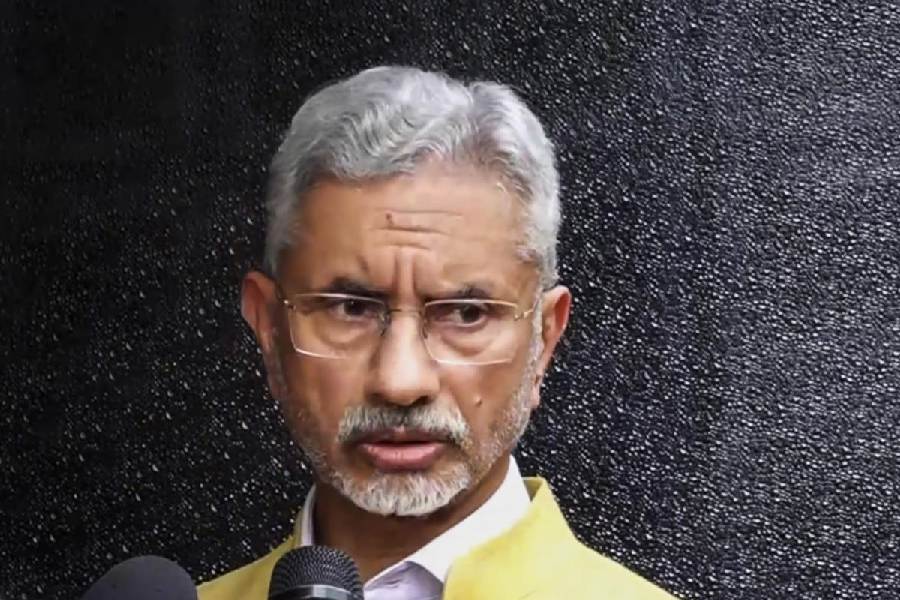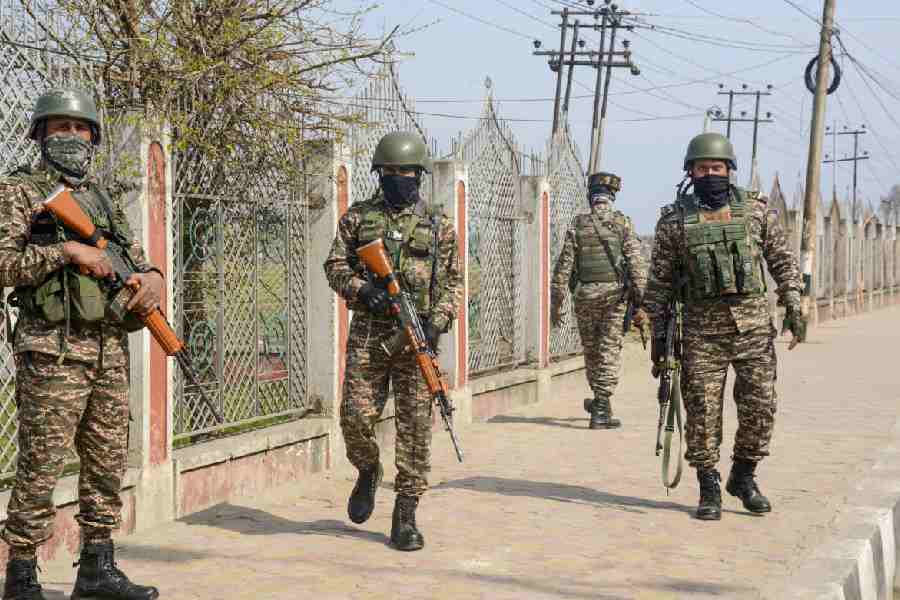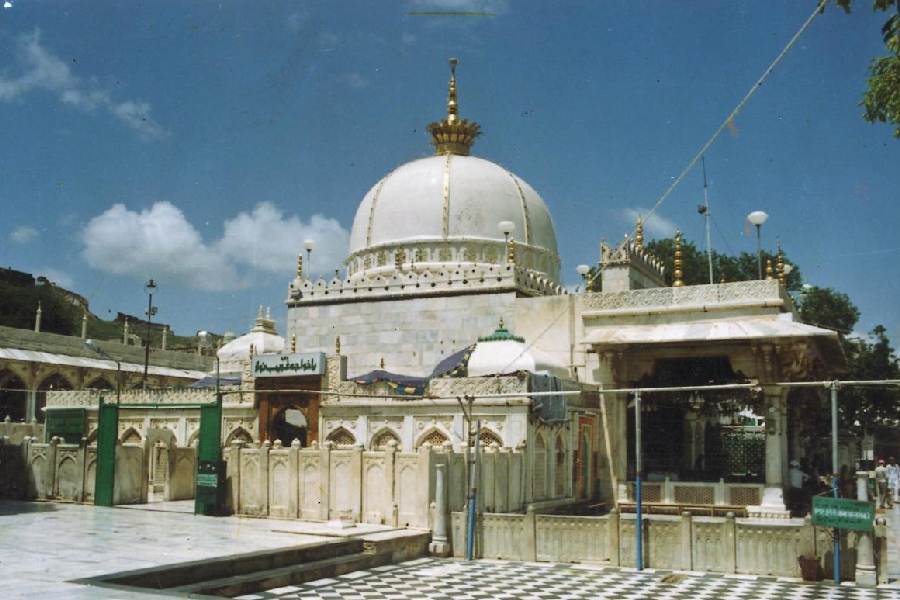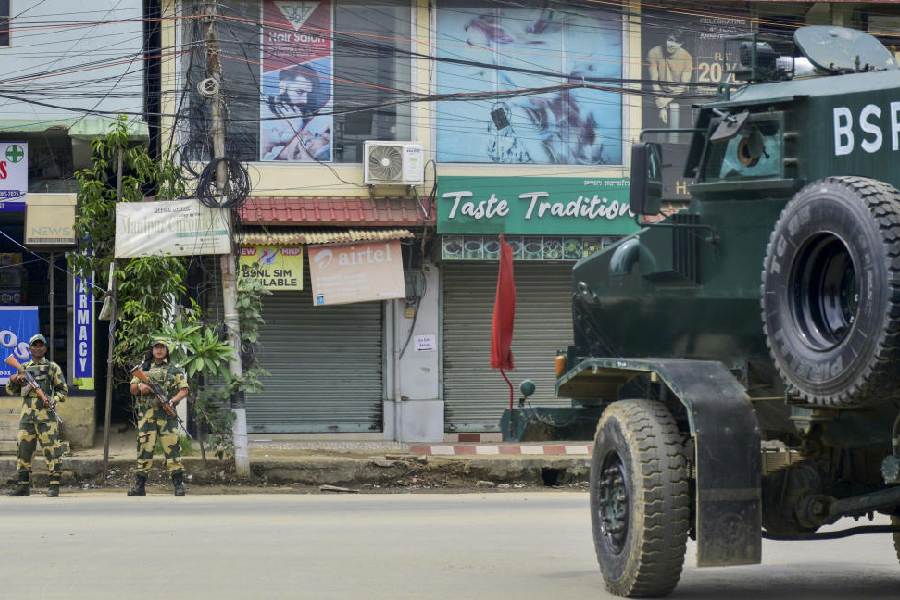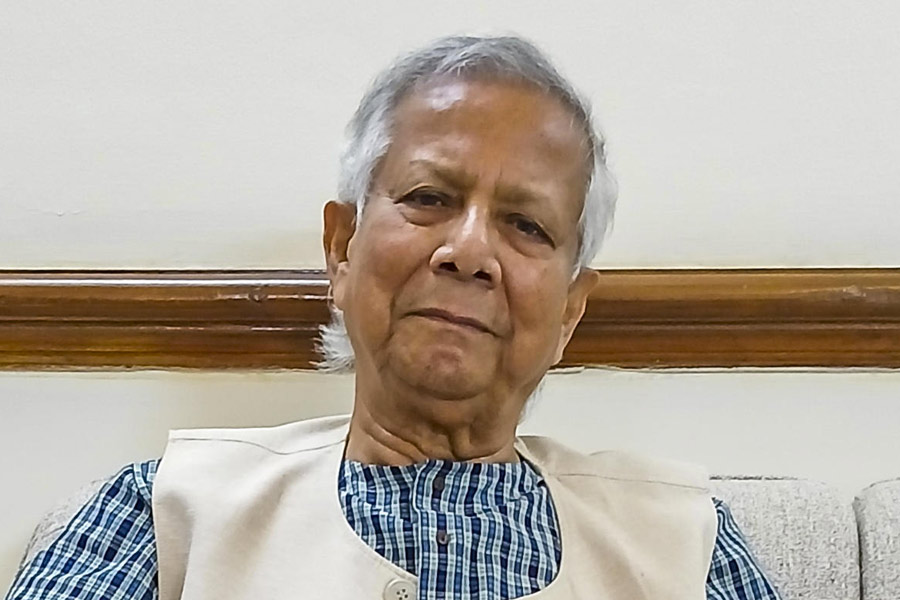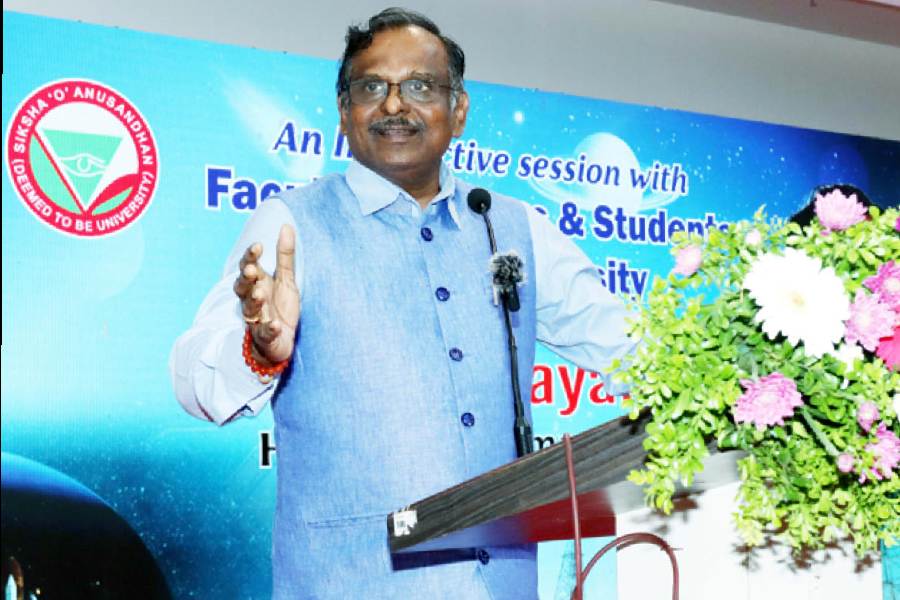 |
 |
| The Kirateshwar Mahadev temple at Legship in West Sikkim; and (below) prayer flags tied to a post on the bank of the Khecheopalri Lake. The lake is also in the West district. Pictures by Prabin Khaling |
Gangtok, March 26: A local filmmaker is shooting a documentary on sites across Sikkim that apparently find mention in different Hindu mythologies to develop the state as a pilgrimage destination.
Director Rakesh Somani said the project was inspired by the Char Dhaam complex, also called Siddhesvara Dhaam, in Namchi.
“Tourists are increasingly coming to Sikkim for sightseeing. However, off late, Sikkim has also become a pilgrimage destination for the Hindus with the inauguration of Siddhesvara Dhaam. This inspired us to prepare a documentary on the important pilgrimage sites in Sikkim for the Hindus. We are aiming to boost the pilgrimage tourism appeal of the state,” said the filmmaker from Gangtok.
Somani had directed Khoto Sikko, the first film in a language spoken by migrant Marwaris. The movie was released in 2010.
He said the script of the documentary is being written by a correspondent at the Gangtok AIR station, Vinay Raj Tiwari, and it is almost ready.
“There are some sites in Sikkim that are mentioned in Hindu mythologies. The rich Buddhist heritage of Sikkim is known all over the world but very few people know that the Himalayan state is also linked to the Hindu mythologies. The documentary is an attempt on our part to highlight that Sikkim is not only important for the Buddhists but it is also a holy place for the Hindus,” Tiwari said.
He added that a part of the script that portrays the religious importance of Mount Kanchenjungha, the Shiva temple at Legship, Khecheopalri Lake, Hanuman Tok in Gangtok and Siddhesvara Dhaam is ready.
Tiwari said according to Hindu scriptures, Goddess Durga had slain two demons on Mount Kanchenjungha and in the Ramayana, Lord Hanuman had rested at a hill top above Gangtok while searching for the sanjivani buti for Lakshman.
The hilltop, 15km from Gangtok, has a temple dedicated to Lord Hanuman and is known as Hanuman Tok.
Tiwari said in the Mahabharata it is mentioned that the eldest of the pandavas, Yudhisthira, had answered correctly the questions asked by a goddess at the Khecheopalri Lake in West Sikkim. The answers had saved the lives of his four brothers.
The lake is 147km from here. The pandavas had also rested in Sikkim during their 14-year exile.
During the exile, Arjuna, one of the pandavas, had lost a duel with Lord Shiva who had disguised himself as a tribal warrior. The place where the fight took place is now known as Legship.
On the bank of the Rangit river at Legship there is Kirateshwar Mahadev temple dedicated to the tribal warrior, the incarnation of Lord Shiva.
Legship in West Sikkim is 110km from here.
“Research on the importance of the Teesta river for the Hindus is going on. We are also appealing to the people to suggest to us places in Sikkim that are of importance to the Hindus so that those sites can also be incorporated in the documentary,” Somani said.
Chaar Dhaam at Namchi will also be shown in the documentary. The Chaar Dhaam complex or Siddhesvara Dhaam has a 108ft statue of Lord Shiva and replicas of the four dhaams of the country.
The complex at Solophok hilltop in Namchi was opened on November 7, 2011.
The place also has replicas of four sacred shrines, Jagannatha, Badrinatha, Dvaraka and Ramesvaram and replicas of 12 jyotirlings spread across India.
The Chaar Dhaam also has an 18-feet tall statue of Lord Kirateshwar.
Tiwari said the documentary would be ready in a couple of months and he will talk to the spiritual channels for telecasting it.
“We will also prepare DVDs of the film and sell it outside Sikkim so that people get to know about the Hindu pilgrimage destinations here,” he said.


